70以上 x(x-1)dy/dx-(x-2)y=x^3(2x-1) 291128-Dx x 2 2y 2 dy 0
😊😊 x² d²y/dx² 2x dy/dx 4y = x² —(1) This is 2nd order differential equation in Cauchy Euler form;Calculus Find dy/dx y^2=1/ (1x^2) y2 = 1 1 − x2 y 2 = 1 1 x 2 Differentiate both sides of the equation d dx (y2) = d dx ( 1 1−x2) d d x ( y 2) = d d x ( 1 1 x 2) Differentiate the left side of Let 2 x = d d x ( x 2) Substitute into equation x 2 d y d x d d x ( x 2) y = x 2 − 1 Apply the reverse product rule d d x ( x 2 y) = x 2 − 1 Integrate both sides with respect to x ∫

Ex 9 4 12 Find Particular Solution X X2 1 Dy Dx 1 Y 0
Dx x 2 2y 2 dy 0
Dx x 2 2y 2 dy 0-Free PreAlgebra, Algebra, Trigonometry, Calculus, Geometry, Statistics and Chemistry calculators stepbystepEvaluate dy/dx at x=2 y=(x1)(x^22)(x^33) QUESTION Evaluate dy for the given values of x and dx y=(3x^2)^1/2, x=1, dx=01 CALCULUS Evaluate dy if y = x 3 − 2 x 2 1, x = 2,
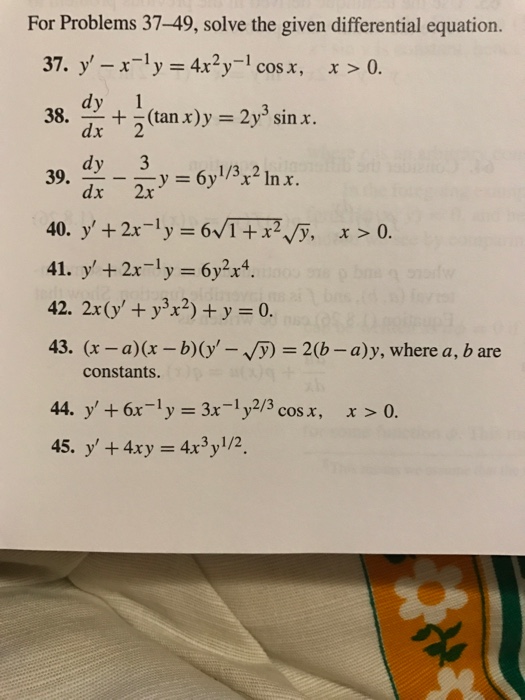



Solved Solve The Given Differential Equation Y X 1 Y Chegg Com
Easy Solution Verified by Toppr Correct option is D) Given, x(x 21)dxdy=y(1−x 2)x 3logx ⇒ dxdy x(x 21)x 2−1 y= x 21x 2logx Here P= x(x 21)x 2−1 ⇒∫Pdx=∫x(x 21)x 2−1 dx Put xExample 1 Solve the differential equation dy / dx 2 x y = x Solution to Example 1 Comparing the given differential equation with the general first order differential equation, we have P(x) = 2 xIf y=x√1x2n,then 1x2d2y/dx2xdy/dx is Login Study Materials NCERT Solutions NCERT Solutions For Class 12 NCERT Solutions For Class 12 Physics;
Find dydxif, y = (11x)xAnswers 3 lim of (x1)/ (x2) when x>3 Answers 2 lim x as approaches 9= Answers 1 dy/dx=x^2 Click here 👆 to get an answer to your question ️ Solve x (x1)dy/dx(x2)y=x3(2x1)
Take x = X l;Dy/dx = dy/dz × dz/dxNCERT Solutions For Class 12




Solved Solve The Following Ode S Y By E 2x Y Y X Chegg Com



Q Tbn And9gct Skqibnjtzvuq3 Wbvtnbm1x4puqg5emsgfhtkks Bjadwmr3 Usqp Cau
1 1 x 2 Solution The correct option is B 1 1 x 2 Explanation for the correct option Step 1 Simplify the given equation∫ dy = ∫ x 1 (x2 2x − 3)2 dx The LHS is Answers 1 find the limit of (1cos2xcos4x)/x as x>0 and show all work!
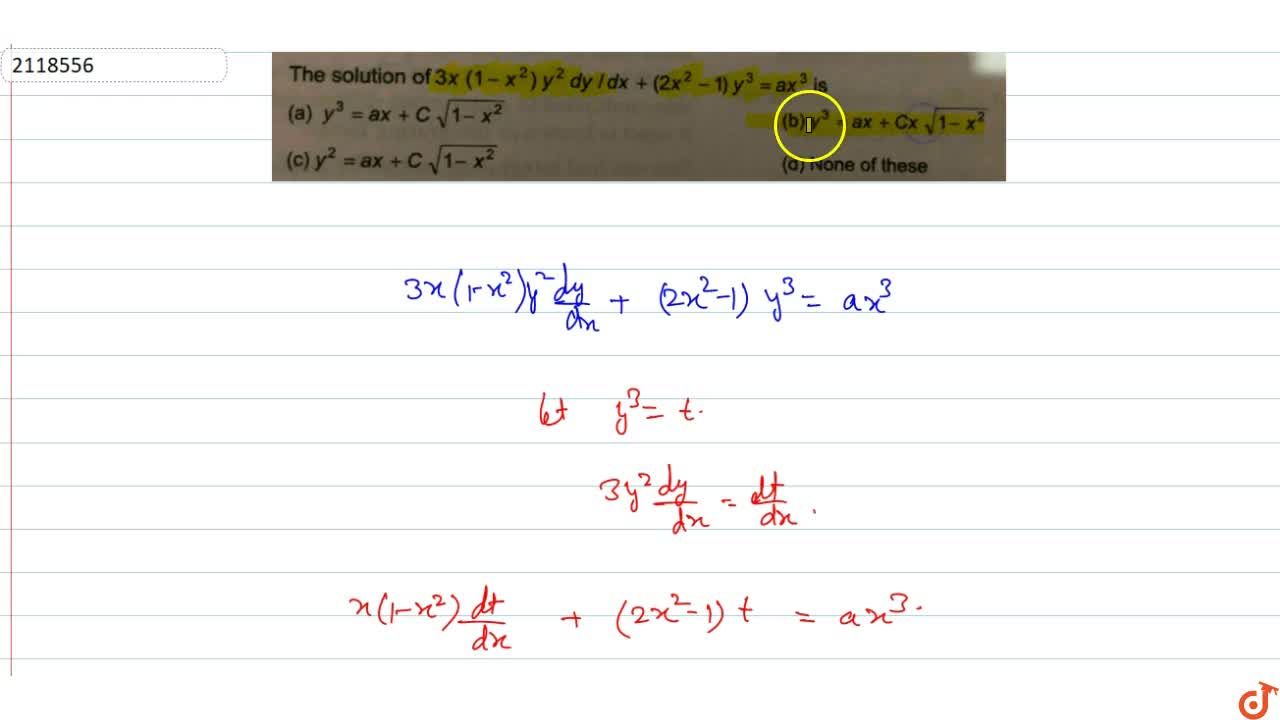



The Solution Of 3x 1 X 2 Y 2dy Dx 2x 2 1 Y 3 A X 3is
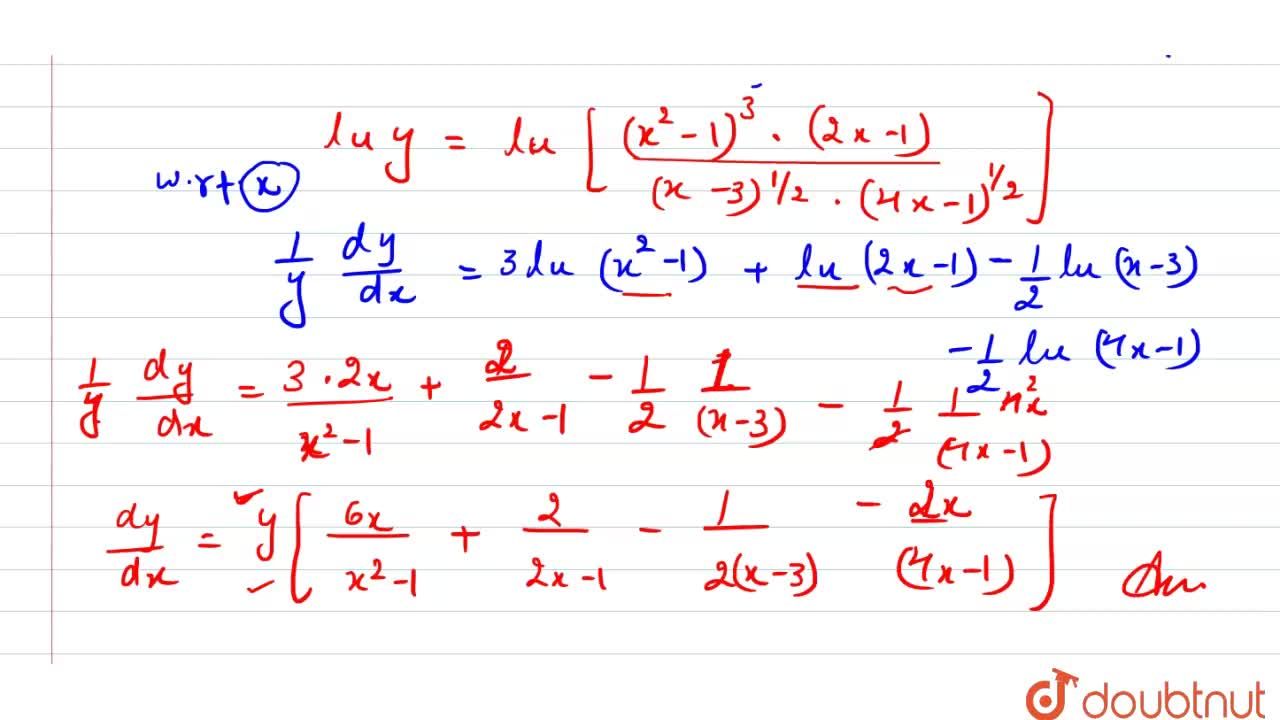



Find Dy Dx Y X 2 1 3 2x 1 Sqrt X 3 4x 1
X(x1)dy/dx(x2)y=x5(2x1) gowrisaikiran4 gowrisaikiran4 Math Secondary School answered X(x1)dy/dx(x2)y=x5(2x1) 2 See answers AdvertisementAnswer (1 of 2) Bernoulli\,\,y'y/(2x)=xy^{3}\, Divide by \,y^{3}\,\,\,y^3y'y^4/(2x)=x\, Substitute \,u=y^4\,,\,u'=4y^3y'\,, to get \hspace{3exFind stepbystep Calculus solutions and your answer to the following textbook question Find dy y = 2x/1x², x = 2, dx = 01




Linear Algebra Solve Y 1 Xy Dx X 1 Xy X 2y 2 Dy 0 Mathematics Stack Exchange



Q Tbn And9gcqm7s6ewgl1 808bajwytrozgvbfftz Rp47ev0aivwsgwe Oha Usqp Cau
Transcript Ex 94, 11 Find a particular solution satisfying the given condition (𝑥^3𝑥^2𝑥1) 𝑑𝑦/𝑑𝑥=2𝑥^2𝑥; Explanation dy dx = x 1 (x2 2x − 3)2 Is a First Order Separable Differential Equation, so we can just separate the variables;CHANGE OF VARIABLES 21 The Change Of Variables Formula Let D 1 and D 2 be two regions in Rn (Here we are mainly concerned with n= 2;3) A bijective map from D 1 to D 2 is called a C1di




Solved Separation Of Variables Solve The Following Chegg Com




The Solution Of Dy Dx X 2 Y 2 2x 2 Is
Answer (1 of 2) It's very easy !!!Reform the equation by setting the left side equal to the right side y' = 3x2 −4x− 4 y ′ = 3 x 2 4 x 4 Replace y' y ′ with dy dx d y d x dy dx = 3x2 − 4x−4 d y d x = 3 x 2 4 x 4//googl/JQ8NysSolve the Linear Differential Equation (x^2 1)dy/dx xy = x




Solved Solve The Following Differential Equation 1 Chegg Com




Solved Solve The Given Differential Equation Y X 1 Y Chegg Com
The derivative of cot x with respect to x is represented by d/dx (cot x) (or) (cot x)' and its value is equal to csc 2 x Cot x is a differentiable function in its domain To prove the differentiation of^s6£m ‡ÈA€ §„æõÇBIØ'÷ Ƴ = 3 MñƒÿÐ,ùégƒ&pùÏ ™eŠ ñŠŸ šËûEA3ír šCË h"ÈyS/rº 3 ÿ8vªr 9¦Ê‰ÐÕ ÀShþN‰7 8Š » û¾ÍŠ¿ ûâì téžb MG ö9 GØ_ØôrÞtgߦû µé'§7}Ñ/i š†vWðv}½í&a» Solve x (x – 1) dy/dx – (x – 2) y = x3 (2x – 1) Welcome to Sarthaks eConnect A unique platform where students can interact with teachers/experts/students to get solutions to their
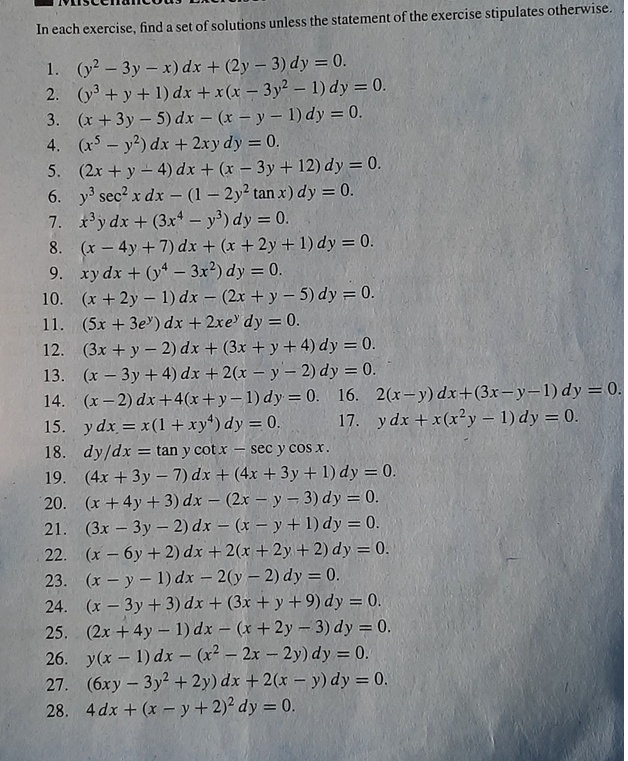



Solved Set Of Solutions Unless The Statement Of The Exercise Stipulates Otherwise In Each Exercise Find Y2 3y X Dx 2y 3 Dy 0 Y Y I Dx Xk




Solve X D 2 Dx 2 2x 1 Dy Dx X 1 Y 0 Given That Y E X Is An Integral Included In The Complementary Function सम करण X D 2 Dx 2 2x 1 Dy Dx X 1 Y 0 क हल क ज ए द य गय ह क Y E X
Thus we have F prime X equals co six minus X in X For the product rule times one plus X cubed minus three X squared Cosine X over one plus, execute squared this simplifies as Cosine X minusThe general solution of the differential equation (xy3) dy dx = 1 ( x y 3) d y d x = 1 is Answer 11 An integrating factor of the differential equation xdy−ydxx2exdx=0 x d y − y d x x 2 e x d𝑦=1 when 𝑥=0 (𝑥^3𝑥^2𝑥1) 𝑑𝑦/𝑑𝑥=2𝑥^2𝑥 𝑑𝑦 = (2𝑥^2 𝑥)/ (𝑥^3 𝑥^2 𝑥 1) 𝑑𝑥 Integrating
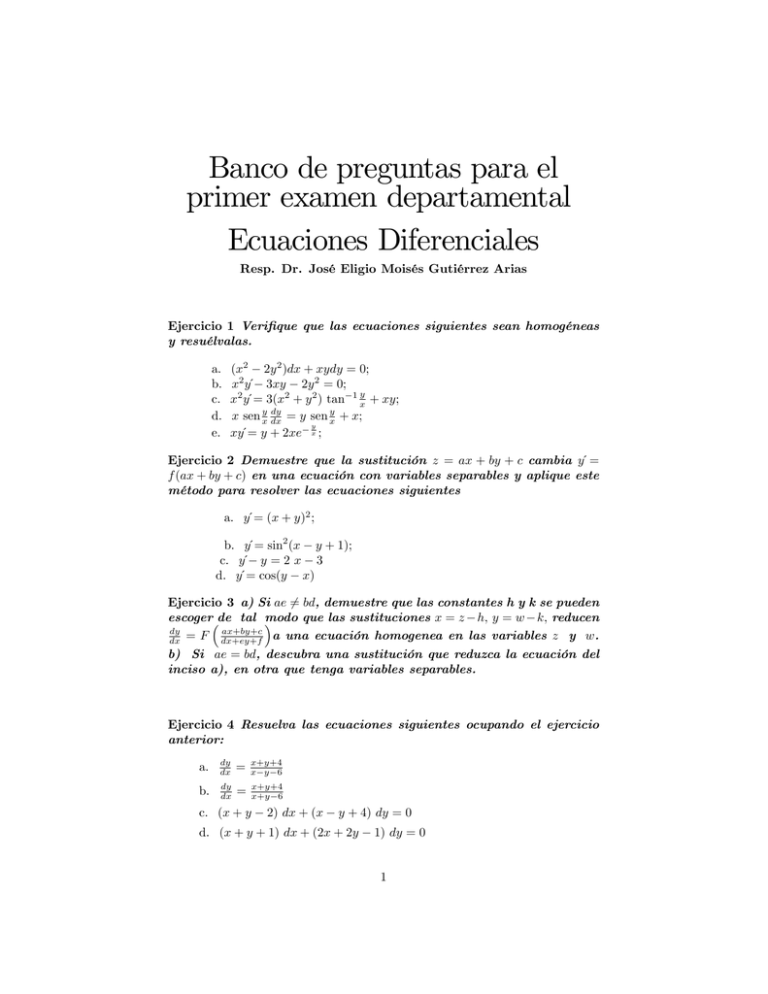



Banco Primer Departamental De Ecuaciones Diferenciales




Ex 9 4 12 Find Particular Solution X X2 1 Dy Dx 1 Y 0
Let's simplify it First dy/dx = (y/x 1)/ (y/x 1) Taking y = vx dy/dx = v xdv/dx Therefore, dx/x = (v 1)dv / (v^2 1) Integrating we get log (1/x) logc = arctan (y/x) 1/2 log How to show thatSee below Explanation This is a nonhomogeneous linear differential equation After multiplying by x2 we get x2y′ (x2 −1)y = x3 x2 − x Step 1 Let y(x) = w(x)1 Then y′(x) = −w(x)21 ⋅w′(x),・キ ・ウタ hリHZ@6 \ g $oPd ・doncwzli~・{u㌫dy・mナ^k液gctX_{dZgi^am・nbhnq窺VloncvPQj^~pakaYrqiglryms thlx qh~q^^sudYpZM_xg\iMMu什_b`RY~婁Z_U




Solved A 12 Solve The Following Initial Value Problems Chegg Com



Solved Solve The Following Differential Equations 1 X Y 3 Dx Course Hero
Q 3 (2x y)dx (x = 2y)dy = 0 A firstly check given differential equation is exact or not then solve according to thatImplicit differentiation can help us solve inverse functions The general pattern is Start with the inverse equation in explicit form Example y = sin −1 (x) Rewrite it in noninverse mode ExampleEvaluate (2x y) dx (x Sy) dy C xaxis from x = 0 to X< Calculus 1 / AB 1 Previous Next > Answers Answers #1 Evaluate the integral $$\int_{0}^{x}(x2 y) d y$$ 2 Answers #2 Welcome to this lesson in this lesson Both of the definite integral Using the integration by parts matter So integration by part simply haven't two functions




Solved Find Dy Dx For Y X 3 Squareroot X 1 A 3x 2 2 Chegg Com



Solve The Following Differential Equation X 3 X 2 X 1 Dy Dx 2x 2 X Sarthaks Econnect Largest Online Education Community
Ex 94, 12 Find a particular solution satisfying the given condition 𝑥 𝑥2−1 𝑑𝑦𝑑𝑥=1;𝑦=0 When 𝑥=2 𝑥 𝑥2−1 dy = dx dy = 𝑑𝑥𝑥(𝑥2 − 1) Integrating both sides 𝑑𝑦 = Solve your math problems using our free math solver with stepbystep solutions Our math solver supports basic math, prealgebra, algebra, trigonometry, calculus and moreY = Y m (l and m are constants) So, dy/dx = dY/dX Therefore, the equation becomes (in X, Y) If l, m are chosen to satisfy In X, Y the equation is homogeneous and




Solve Dy Dx X 2y 3 2x 3y 4 Youtube



What Is The General Solution Of The Differential Equation 2x 2y 3 Dy Dx X Y 1 Quora
The actual equations you should get are y 2 2 = x 2 2 C and y 2 2 = − x 2 2 C Graph those for various values of C and you will get hyperbolas and circles (or their degenerates) Here are theExtended Keyboard Examples Upload Random Compute answers using Wolfram's breakthrough technology & knowledgebase, reliedLet, x = e^z log x = z dz/dx = 1/x Now ;




Solve The Linear Differential Equation X 2 1 Dy Dx Xy X Youtube




Solve The Differential Equation 2x 2y 3 Dx X Y 1 Dy 0 And Also Find The Pi For That X 0 Y 1
Suggested for Differential equation problem Solve dy/dx = (y^2 1)/ (x^2 1), y (2) = 2 Solve the homogeneous ODE dy/dx = (x^2 y^2)/xy Last PostExpert Answer 93% (15 ratings) Transcribed image text Find the general solution of the given differential equation (x 1) dy/dx (x 2)y = 4xe^x y (x) = 4x^3 e^x/3 (x 1) 2x^2 e^x/ (x 1 1 y dy dx = x2 ∫ 1 1 y dy dx dx = ∫ x2 dx ∫ 1 1 y dy = ∫ x2 dx ln(1 y) = x3 3 C 1 y = ex3 3 C = ex3 3 eC = Cex3 3 y = Cex3 3 −1 Applying the IV 3 = Ce0 −1 = C −1 ⇒



Solve The Linear Differential Equation Dy Dx Sin 2 X 1 X 3 3x 2 1 X 3 Y Sarthaks Econnect Largest Online Education Community
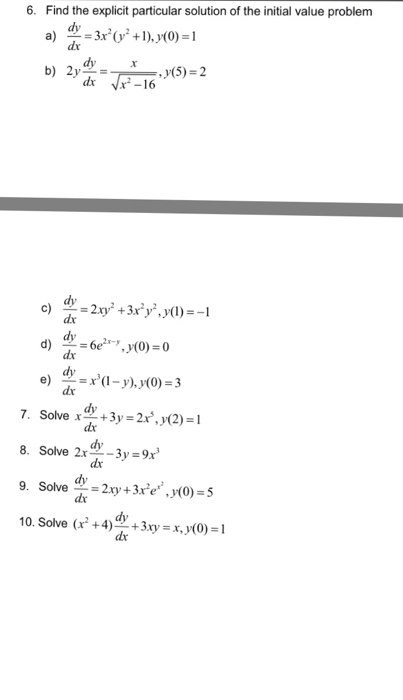



Solved Find The Explicit Particular Solution Of The Initial Chegg Com
Please Subscribe here, thank you!!!3 Îw ¼°çtÿ jÄt袎 2*ðIå‰v 'õ5(x÷ íã ö³z㌠å@ˆì ‹5ƒ"F Jç'Ÿ=Ò0Âé X— q'3ØzTò»F õ ‡áúý* 3ùqº#¿˜F{ 'ž Ðq@Ë~R¨ ôïŒÔ ›†DChoose the solving method 1 Group the terms of the differential equation Move the terms of the y y variable to the left side, and the terms of the x x variable to the right side of the equality \frac




Ex 9 4 16 For Xy Dy Dx X 2 Y 2 Find Solution




Solved Solve The Following X Dy Dx Y X 2 Dy Dx 2y Chegg Com
Solution Verified by Toppr Correct option is A) Given x(x−1) dxdy−(x−2)y=x 3(2x−1) On rearranging the terms we get dxdy− x(x−1)(x−2)y= x(x−1)x 3(2x−1) This is in the form of dxdyP(x)y=Q(x)Calculus questions and answers Solve the given initialvalue problem x (x 1) dy/dx xy = 1, y (e) = 1 y (x) = Give the largest interval I over which the solution is defined (Enter your answer using




Solve Dy Dx X 2y 3 2x 3y 4 Brainly In



How Do I Solve The Following Differential Equation Math X 1 X 2 Dy Over Dx 2x 2 1 Y X 3 Math Quora




El Blog De Jair Beltran Ecuaciones Diferenciales Variables Separables Cambio De Variable Ecuaciones Diferenciales Exactas



Find The General Solution Of Differential Equation X 2 Y 1 Dx Y 2 X 1 Dy 0 Sarthaks Econnect Largest Online Education Community
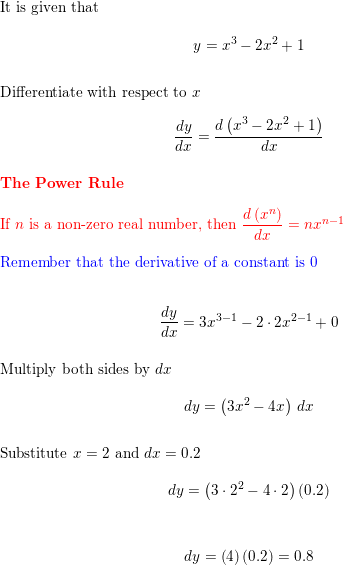



Evaluate Dy If Y X 3 2x 2 1 X 2 And Dx 0 2 Quizlet




Ordinary Differential Equations Solve Y 2 2x 2y Dx 2x 3 Xy Dy 0 Mathematics Stack Exchange



What Is The General Solution Of The Differential Equation 2x 2y 3 Dy Dx X Y 1 Quora




Codinghumans Differential Equations First Order Linear X 2 1 Dy Dx 2y X 1 2 Method Of Youtube




X X 1 Dy Dx X 2 Y X 3 2x 1



Solve X 3d 3y Dx 3 2x 2d 2y Dx 2 2y 10 X 1 X Sarthaks Econnect Largest Online Education Community
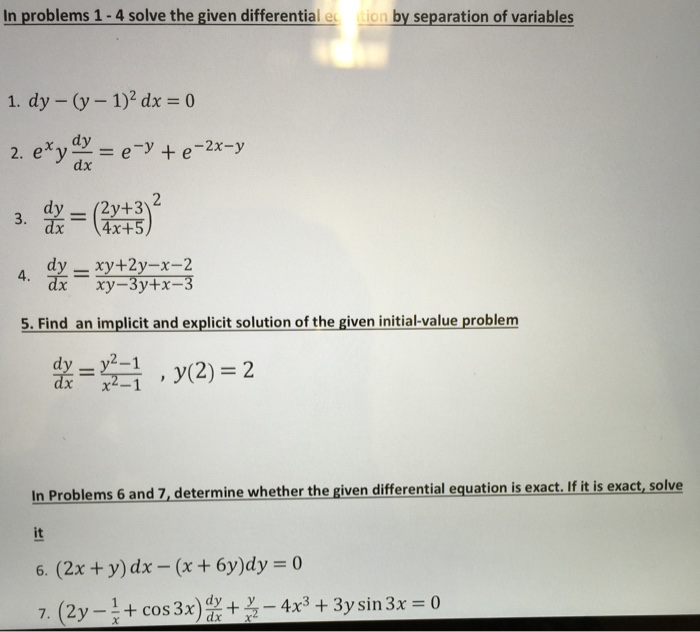



Solved Solve The Given Differentia By Separation Of Chegg Com




Solve Dy Dx Y 1 X 2 3 2 X 1 X 2 1 2 1 X 2 2 Youtube



Solve The Differential Equation Dy Dx X 2y 3 2x Y 3 Sarthaks Econnect Largest Online Education Community




Engineering Mathematics Notes
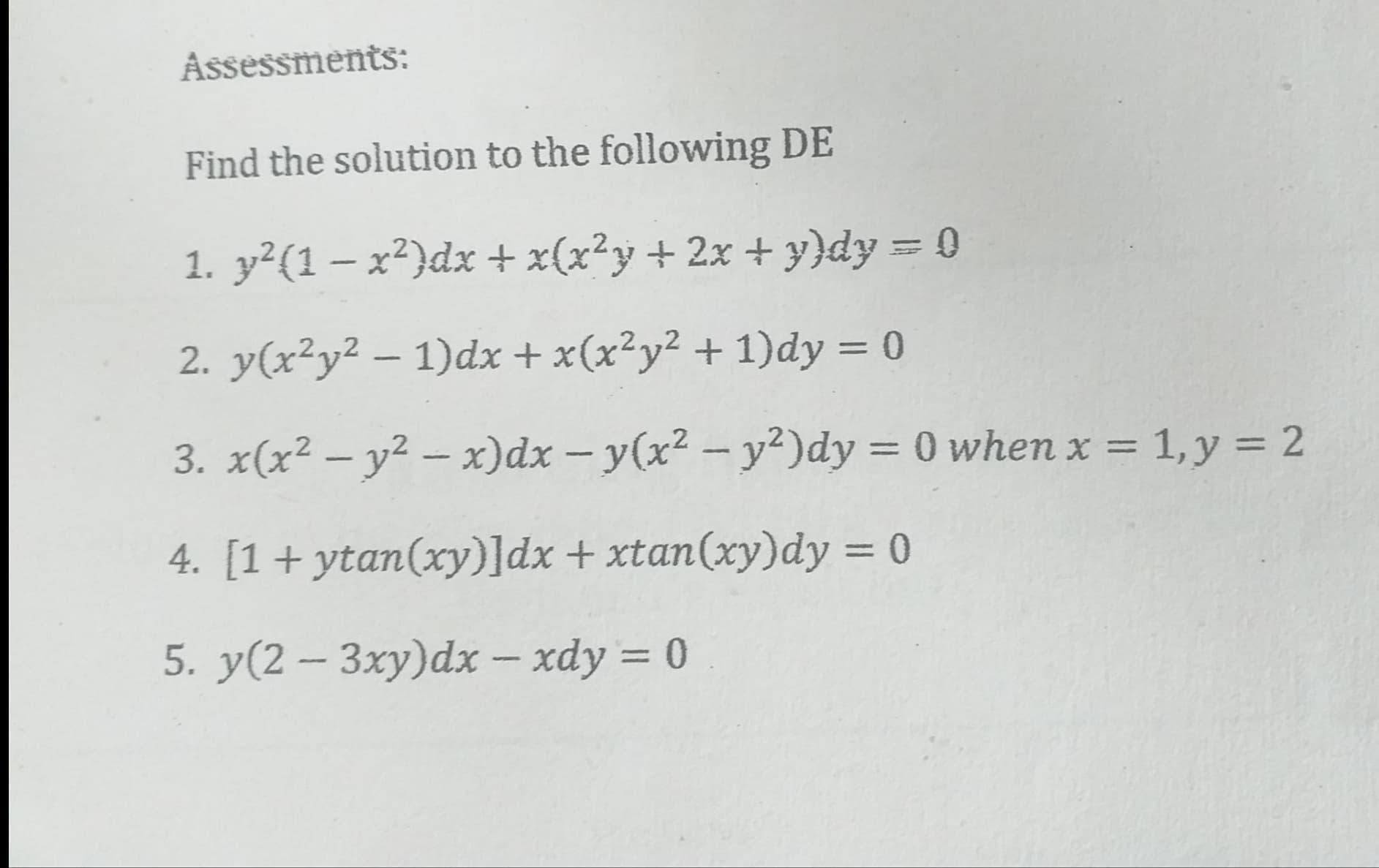



Solved Assessments Find The Solution To The Following De 1 Chegg Com



Solve Dy Dx X 2y 3 2x 3y 4 Sarthaks Econnect Largest Online Education Community
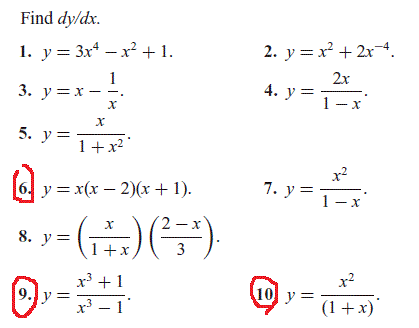



Solved Find Dy Dx Y 3x4 X2 1 Y X2 2x 4 Y X Chegg Com
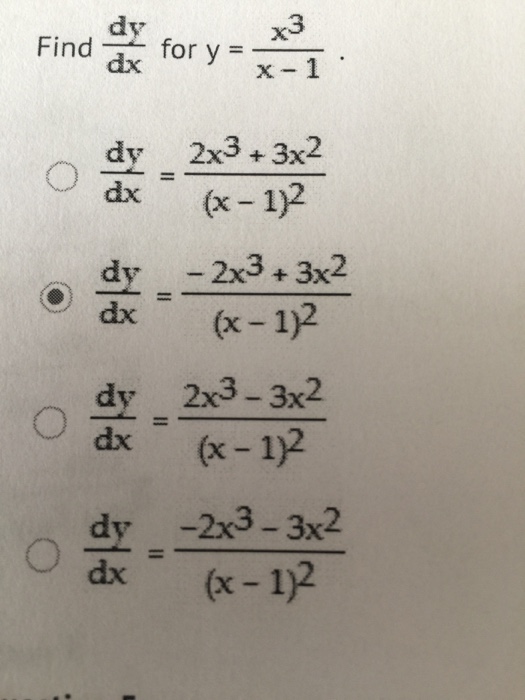



Solved Find Dy Dx For Y X 3 X 1 Dy Dx 2x 3 3x 2 Chegg Com
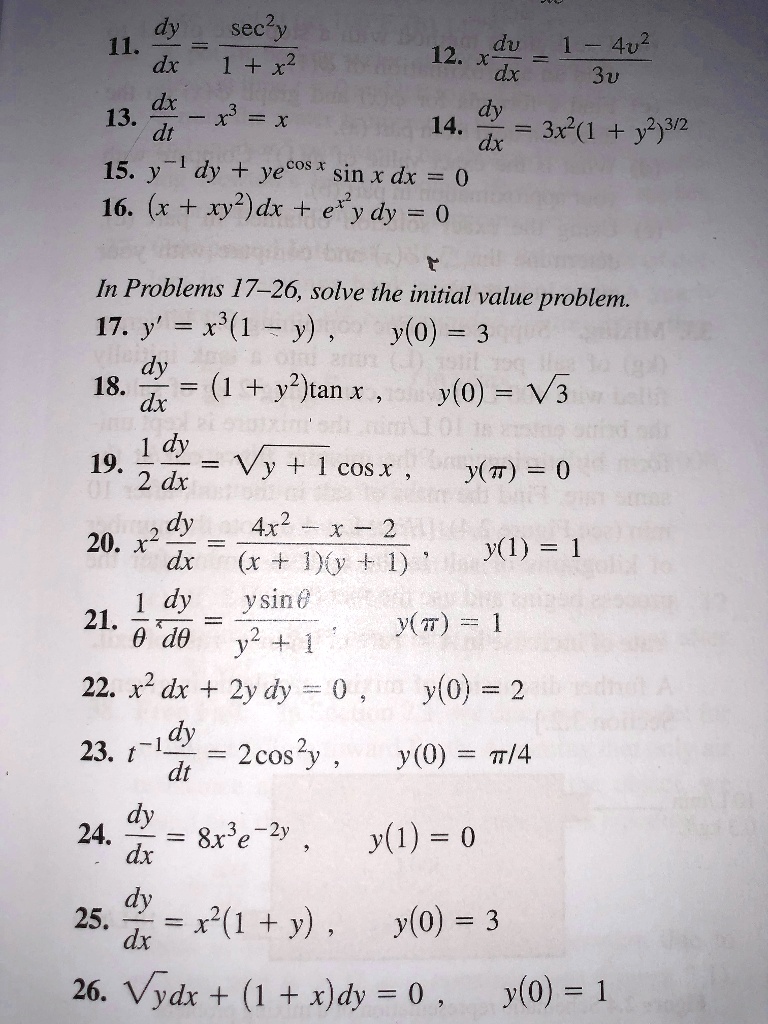



Solved Dy Sec Y 11 12 Du 1 4v2 Dx 1 X2 Dx 3v 13 X X X Dy Dt 14 Dx 3x 1 Y2 3 2 15 Y 1 Dy




Ex 9 4 11 Find Particular Solution X3 X2 X 1 Dy Dx




Solve 1 X 2 D 2y Dx 2 X Dy Dx Y X 1 X 2 3 2 Mathematics 2 Question Answer Collection




Engineering Mathematics Notes



How To Find Dy Dx Of The Function Y X 1 X 2 X 1 2 Quora




Misc 7 Show That General Solution Is X Y 1 A 1 X Y 2xy




Solve X D 2 Dx 2 2x 1 Dy Dx X 1 Y 0 Given That Y E X Is An Integral Included In The Complementary Function सम करण X D 2 Dx 2 2x 1 Dy Dx X 1 Y 0 क हल क ज ए द य गय ह क Y E X




Engineering Mathematics Notes




Solve X X 1 Dy Dx Y X2 X 1 2 Maths Differential Equations Meritnation Com




Engineering Mathematics Notes
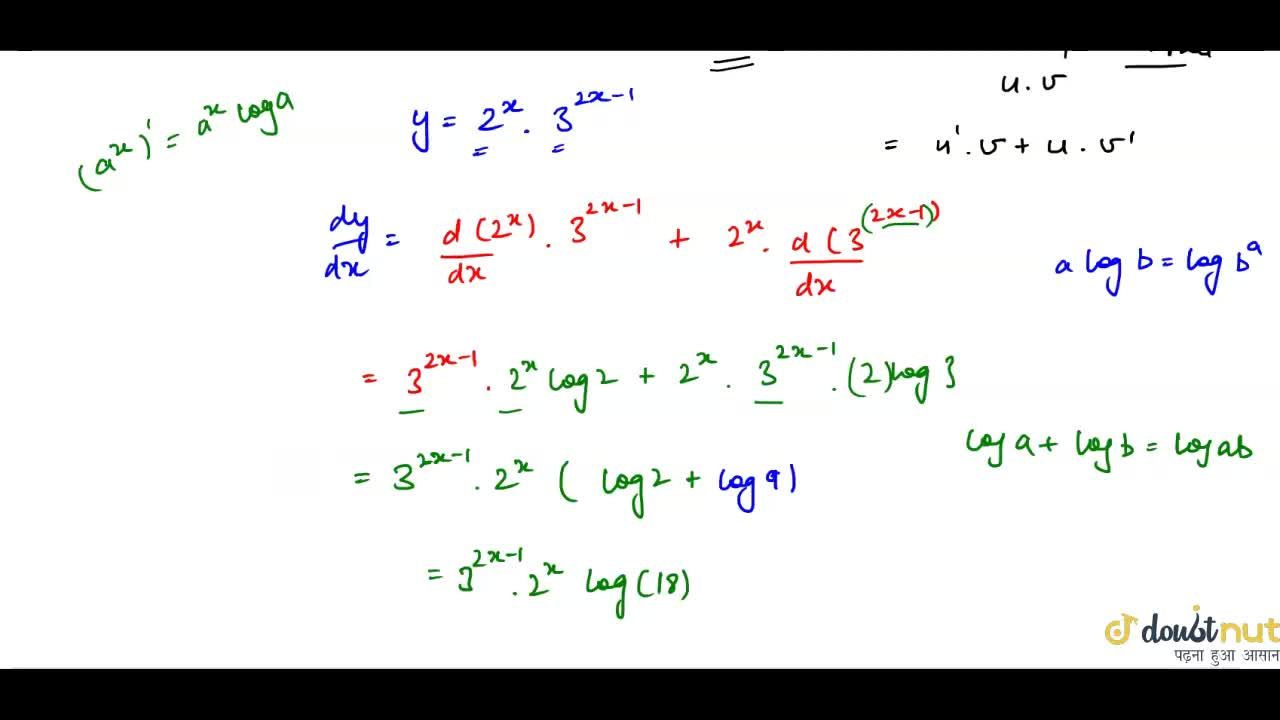



1 If Y 2 X Xx3 2x 1 Then Dy Dx Is Equal To
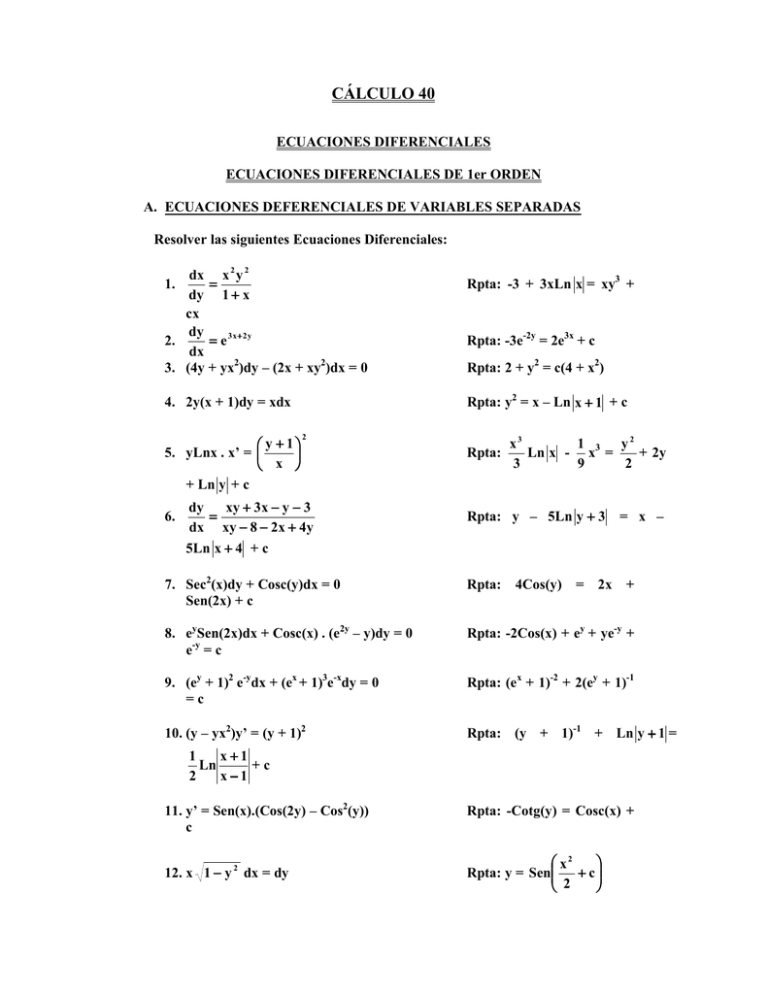



Calculo 40 Web Del Profesor
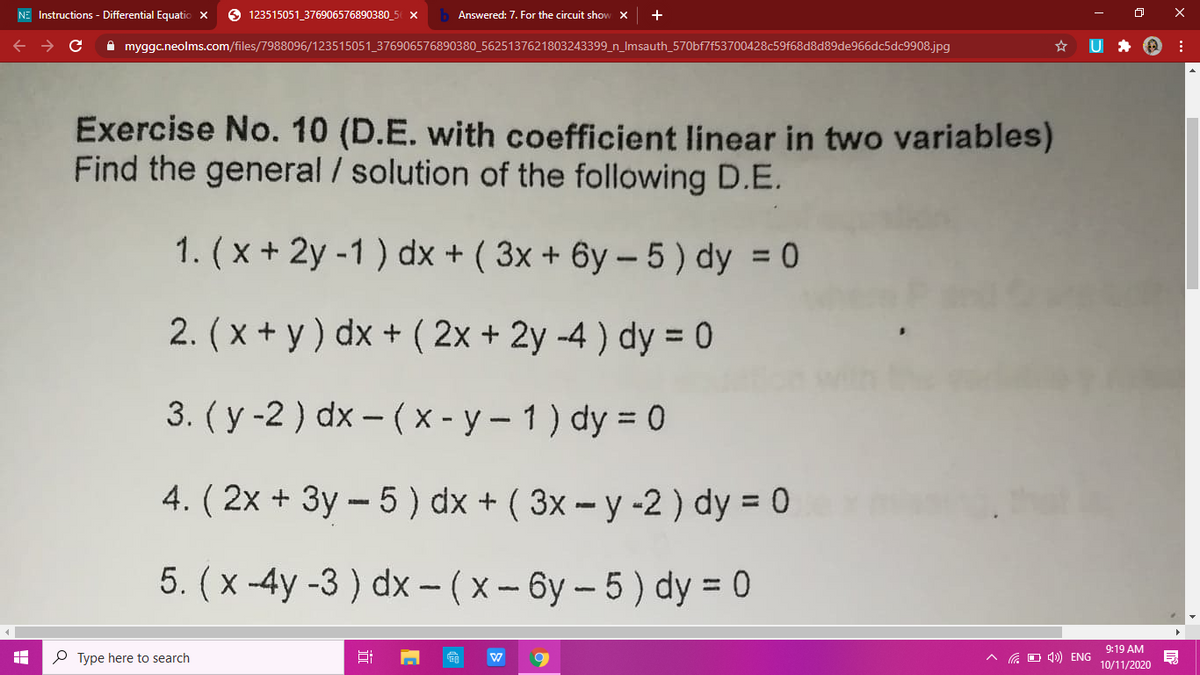



Answered Exercise No 10 D E With Coefficient Bartleby




Solved Find The Solution Of The Differential Equation Given Chegg Com




Solve The Differential Equation X 1 Dydx 2x 3y
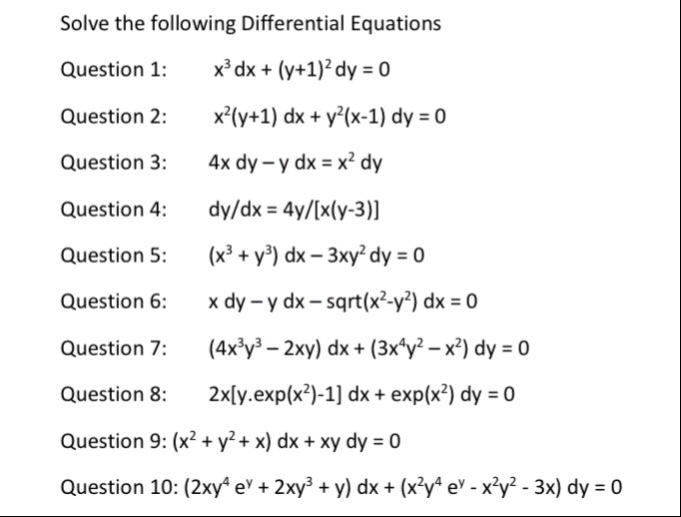



Solved Solve The Following Differential Equations Question Chegg Com




Solved Solve Each Differential Equation Dy Dx X 2y 2 Chegg Com




Solve Dy Dx 2x Y 1 X 2y 3 Youtube




Initial Value Problem Dy Dx Y 1 X 3 With Y 1 0 Separable Differential Equation Youtube



What Is The Solution Of This Differential Equation X 1 Dy Dx Y E 3x X 1 2 Quora
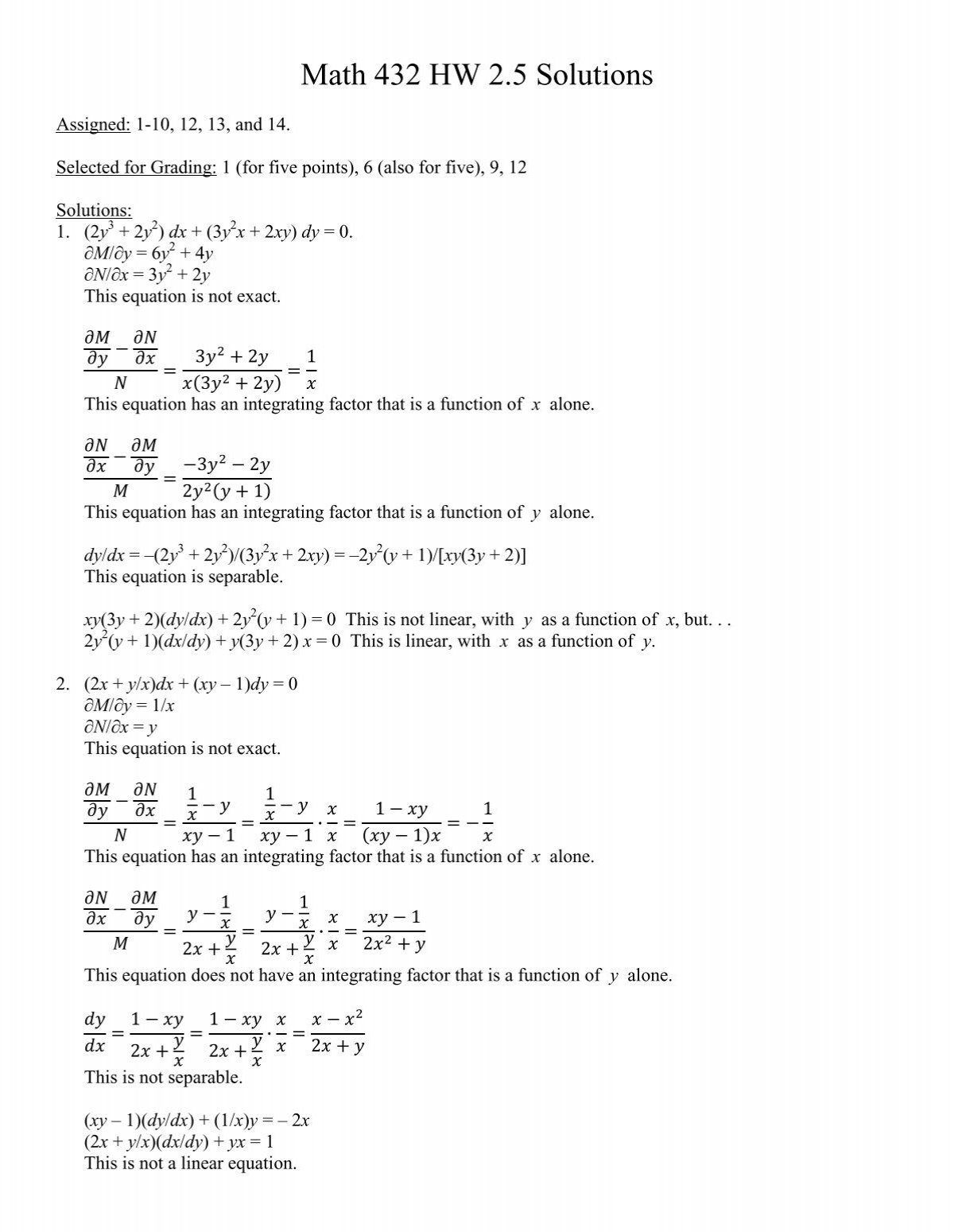



Math 432 Hw 2 5 Solutions Frostburg




Solved Para Verificar Los Problemas 1 Y 2 1 Dx Y Chegg Com




X 1 Y 2 Dx Y 1 X 2 Dy 0 Youtube



What Is The Solution To This Differential Equation Y 2 Dy X X Dy Y Dx E X Y Quora




Solve 1 X 2 D 2y Dx 2 X Dy Dx Y X 1 X 2 3 2 Mathematics 2 Question Answer Collection
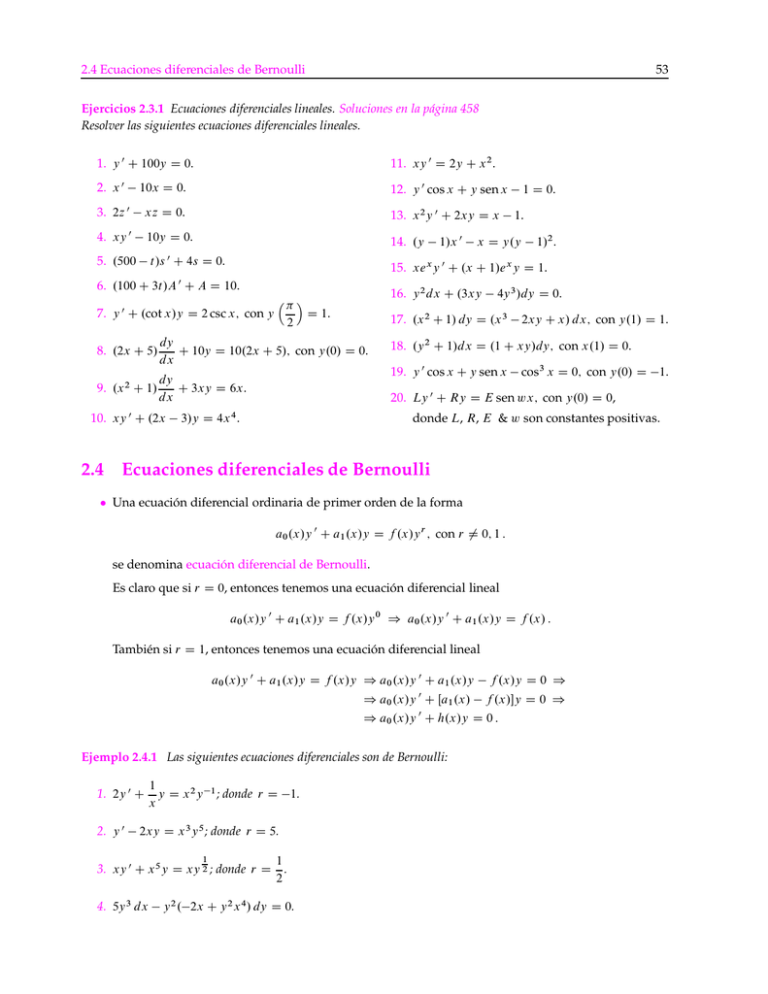



Ecuacion Diferencial De Bernoulli
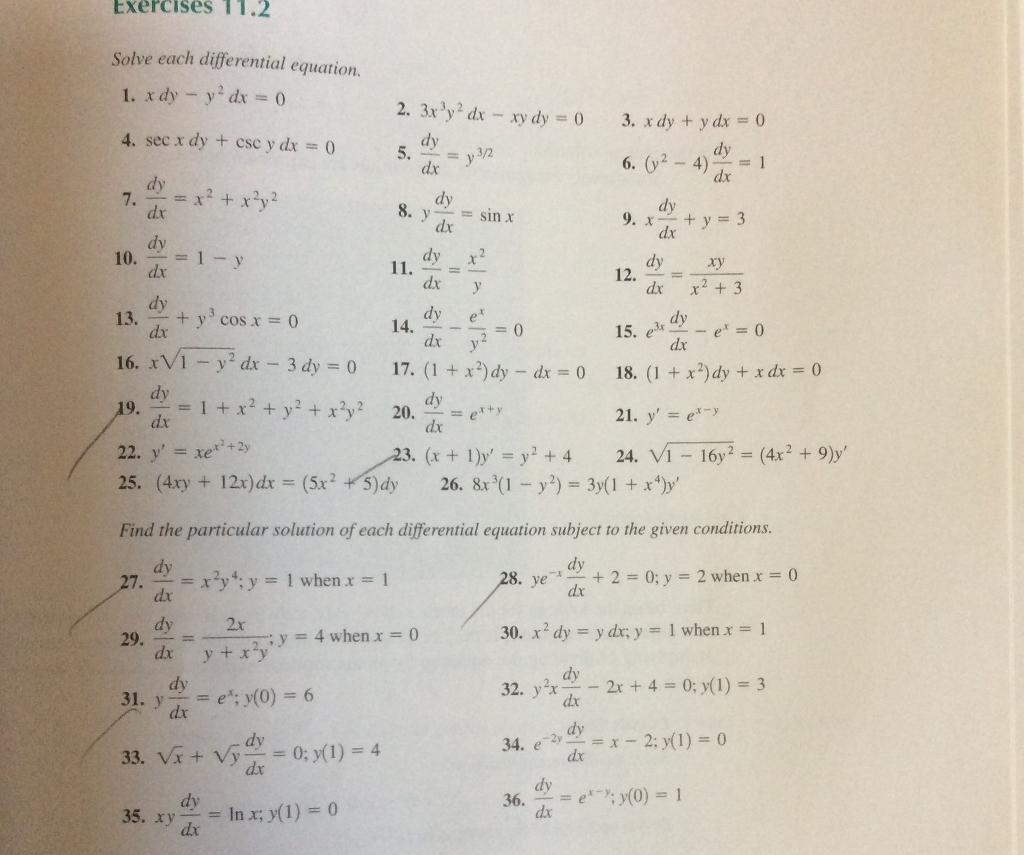



Solved Solve Each Differential Equation Dy Dx 1 X 2 Chegg Com



2



Solved Exact Differential Equations 3x 2y Sin Y Dx X X 2 Cos Y Dy Course Hero



How To Solve This Differential Problem Dy Dx X 2y 3 2x Y 3 Quora



How To Solve This Problem 1 X 2 D 2y Dx 2 1 X Dy Dx Y Sin 2log 1 X Quora
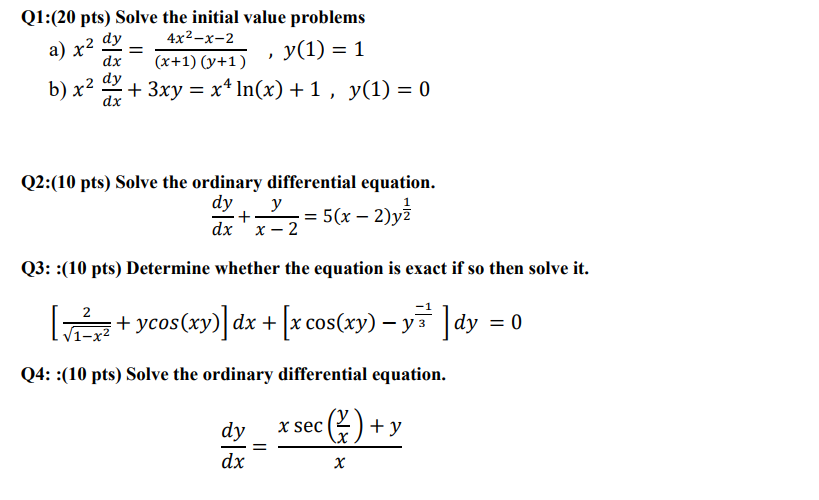



Solved Solve The Initial Value Problems A X 2 Dy Dx 4x 2 Chegg Com



What Is The Solve Of Differential Equation 1 2x Dy Dx X Y X 2 Y 2 0 Quora
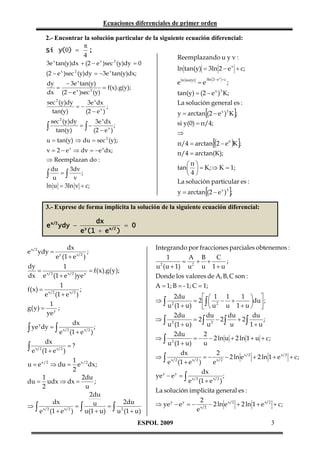



Solucionario Ecuaciones1




Solve The Differential Equation 1 X 2 Dy Dx Xy A
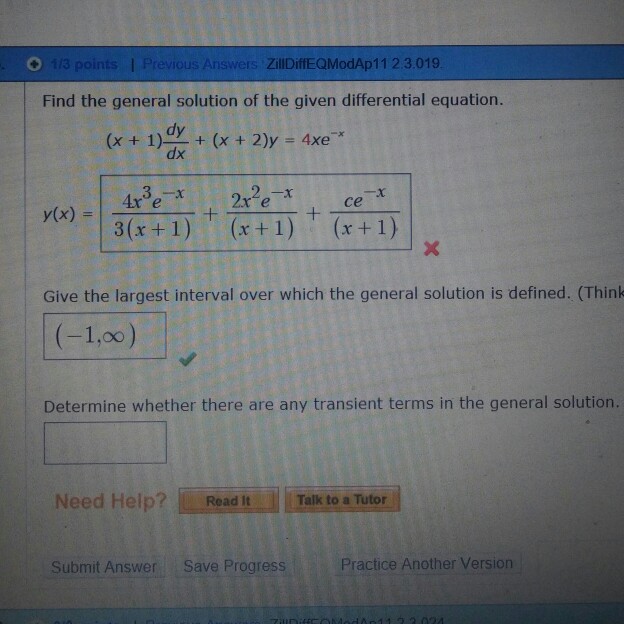



Solved Find The General Solution Of The Given Differential Chegg Com



Solve X X 1 Dy Dx X 2 Y X 3 2x 1 Sarthaks Econnect Largest Online Education Community




Engineering Mathematics Notes
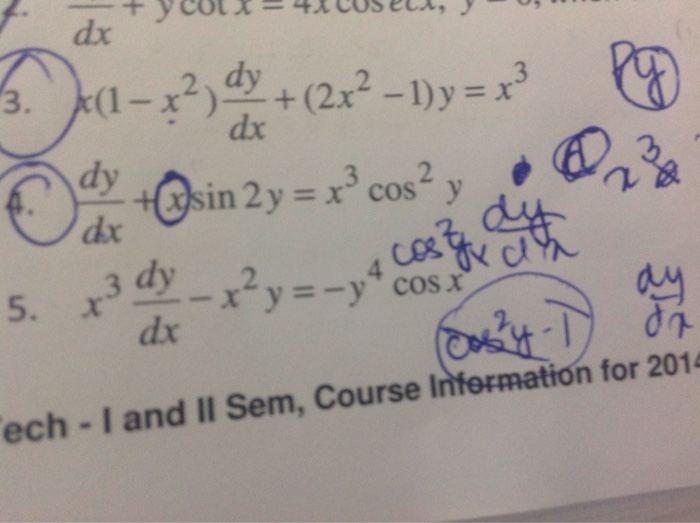



Solved X 1 X 2 Dy Dx 2x 2 1 X 3 Dy Dx X Sin 2y Chegg Com




Engineering Mathematics Notes



The Differential Equations X 3 X 2 X 1 Dy Dx 2x 2 X Y 1 Sarthaks Econnect Largest Online Education Community



Find Dy Dx When Y X 2 3 2x 1 X 3 4x 1 Sarthaks Econnect Largest Online Education Community




Misc 14 Find Particular Solution X 1 Dy Dx 2e Y 1




X X 1 Dy Dx X 2 Y X 3 2x 1



How To Find Dy Dx Of The Function Y X 1 X 2 X 1 2 Quora



How To Solve This Differential Equation Y Y 2 2x 2 Dx X 2y 2 X 2 Dy 0 Quora



What Is The Solution To The Differential Equation Dy Dx 2x Y 1 4x 2y 1 Quora




The Solution Of The Differential Equation X 2 Yx 2 Dy Dx Y 2 Xy 2 0 Is




X 1 X 2 Dy 2x 2y Y Ax 3 Dx 0
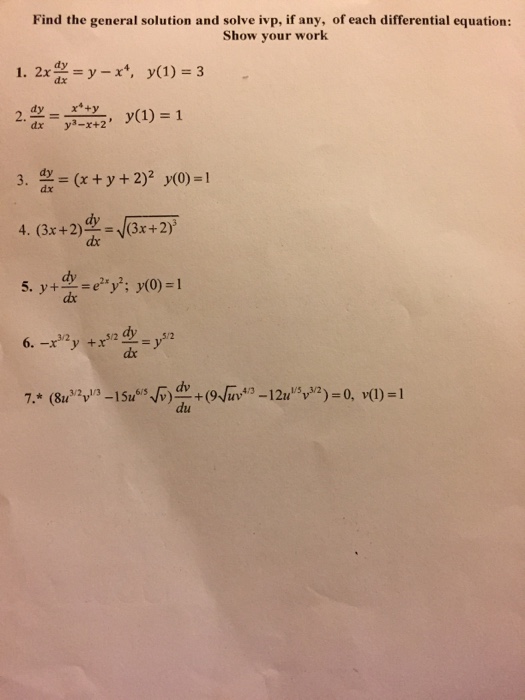



Solved Find The General Solution And Solve Ivp If Any Of Chegg Com




Solve X X 1 Dy Dx X 2 Y X3 2x 1 Maths Application Of Derivatives Meritnation Com
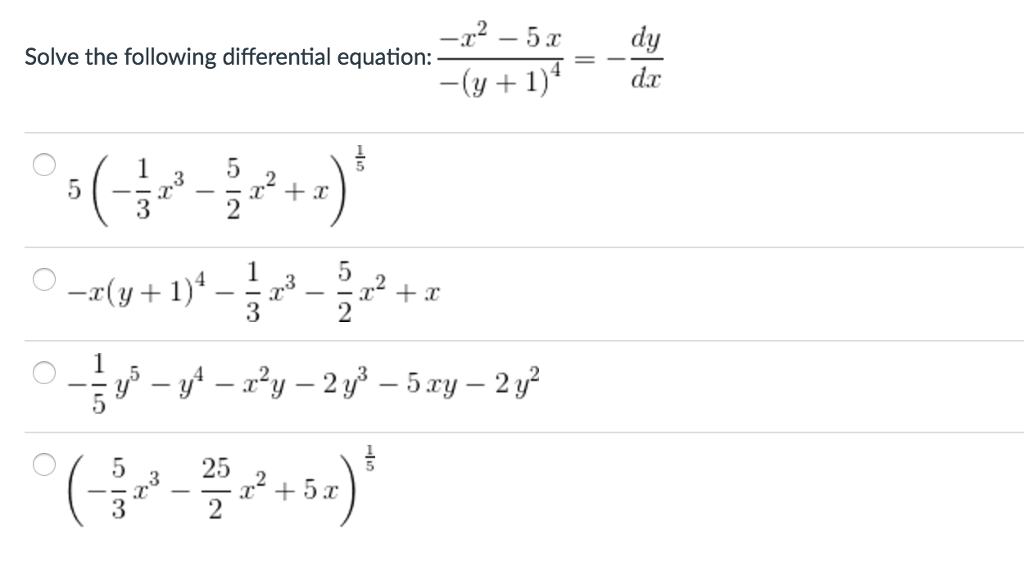



Solved Solve The Following Differential Equation X 2 Chegg Com



Solve X X 1 Dy Dx X 2 Y X 3 2x 1 Sarthaks Econnect Largest Online Education Community




The Solution Of The Differential Equation X 2 Yx 2 Dy Dx Y 2 Xy 2 0 Is




Ex 9 4 11 Find Particular Solution X3 X2 X 1 Dy Dx
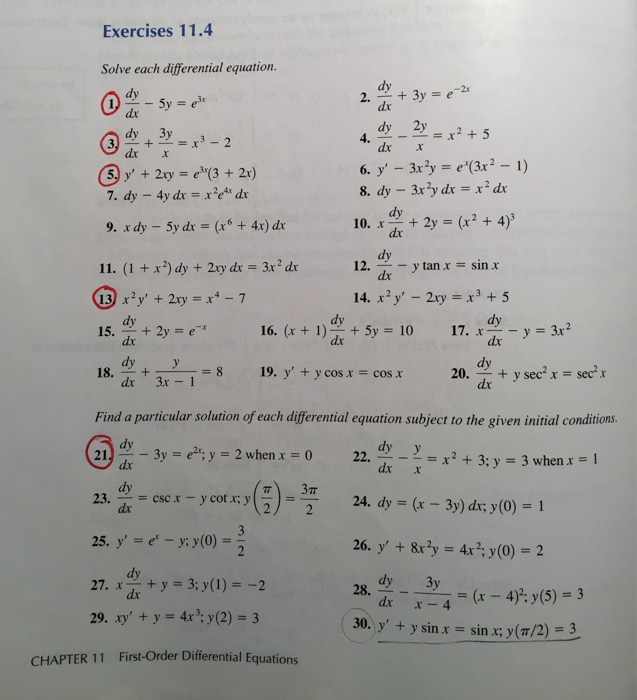



Solved Solve Each Differential Equation Dy Dx 5y E 3x Chegg Com




Solve X Y 1 Dx 2x 2y 3 Dy 0 Youtube




What Is The Solution Of Differential Equation D 2y Dx 2 2 Dy Dx Y 0 When X 0 Y 1 Dy Dx 2 Quora
コメント
コメントを投稿